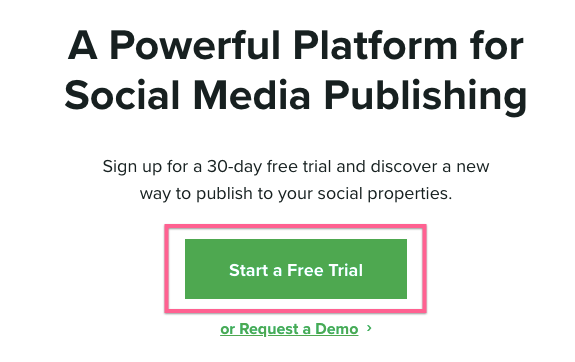Call to action (CTA)
A call to action or “CTA” is a prompt on your website that asks users to take a specific action. Most call to action copy is written as an imperative, or request, like “Sign Up Today” or “Buy Now.” CTAs come in the form of buttons and hyperlinks.
Practically every digital marketer and business owner want their customer to take specific, measurable actions when they arrive on their website. Clear call to action content drives the correct activity from your audience.
Call to action benefits
A call to action is an important aspect on any webpage. Call to action links and buttons act as signposts telling users what they need to do next. Without clear CTAs, users may struggle to see the route to buying a product or signing up for a service.
Compelling call to action content:
- Eliminates decision fatigue: Simple directive statements tell your clients where to go and what to do next, simplifying the user journey.
- Directs your audience: With a clear call to action, you reduce the risk of your audience clicking away from your page due to confusion or feeling overwhelmed.
- Improves conversions: The more people you convince to follow your CTAs, the more leads, customers, and prospects you get.
Something as simple as a button saying “Download Report” is enough to move a customer to the next stage in their buying journey.
What does call to action content look like?
A call to action is any button or hyperlink that indicates the next step your audience needs to take in your sales funnel. Some companies include multiple calls to action on a single page. Examples of a call to action include:
- Click here to read more articles
- Share now on social media
- Sign up for our newsletter
- Start your free trial

CTAs appear in various places on a website. For instance, you could have a CTA in:
- Pop-ups and slide-in content
- Purchase pages or checkout pages
- Ads
- End-of-page for articles or landing pages
- Side panels
- Persistent headers
Components of a compelling call to action
There are countless tips available for creating effective CTAs. The best call to action content often comes from A/B testing various designs and words. However, a few best practices to follow with your CTAs may include:
- Exceptional design: A brightly-colored button or link that contrasts with the page design is excellent for attracting user attention.
- Proper placement: Call to action content needs to be the most visible thing on the page. The location of the CTA should command attention.
- Clear benefits: Effective CTAs are benefit-oriented. Highlight the advantages a user will access by completing a specific transaction.
- Actionable text: Writing in the imperative clarifies a CTA. Action-driven text like “Start Your Free Trial” promotes conversions.
- Short length: A CTA must be short enough to fit into button format. Stick to five words or less.
Many businesses also track the results of their CTA content and buttons carefully. By measuring the results of each design, brands determine which words and phrases have the best impact on conversions.
Recommended for you
- Categories
Hashtags: What they are and how to use them effectively
Published on March 16, 2023 Reading time 13 minutes - Categories
The social media customer service metrics that experts measure
Published on March 16, 2023 Reading time 7 minutes - Categories
Customer service chatbots: How to create and use them for social media
Published on March 15, 2023 Reading time 9 minutes
